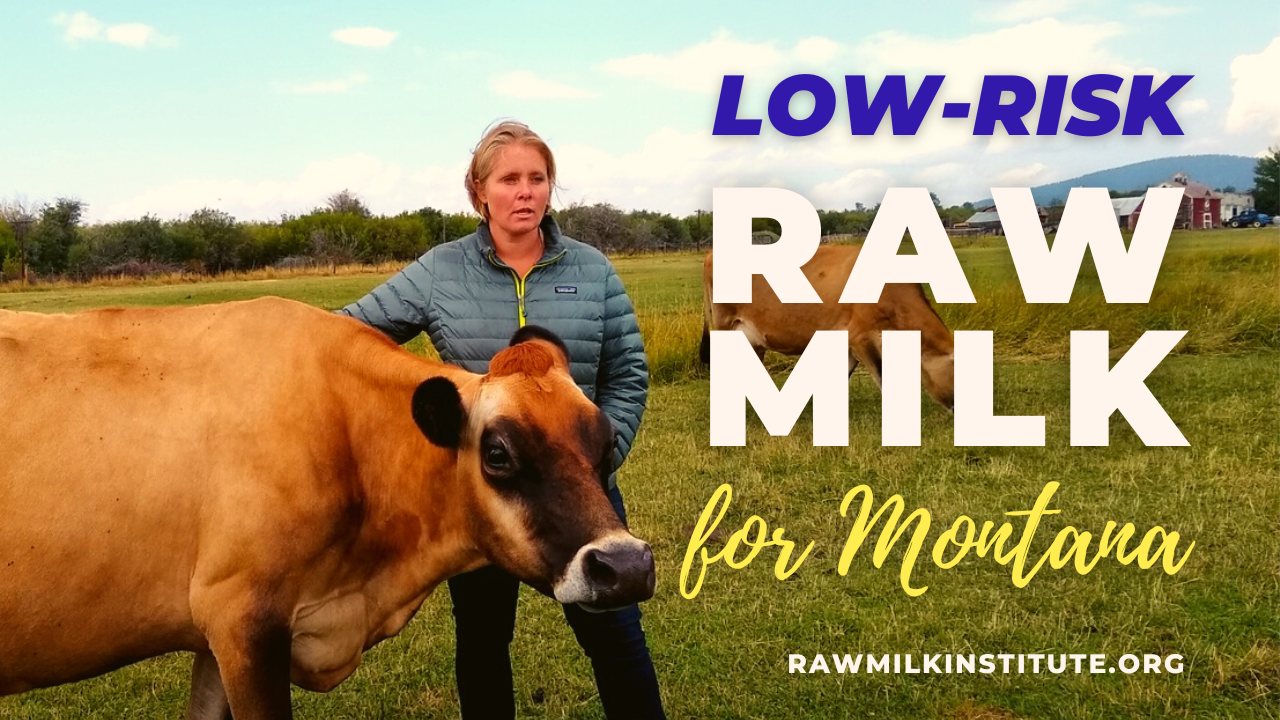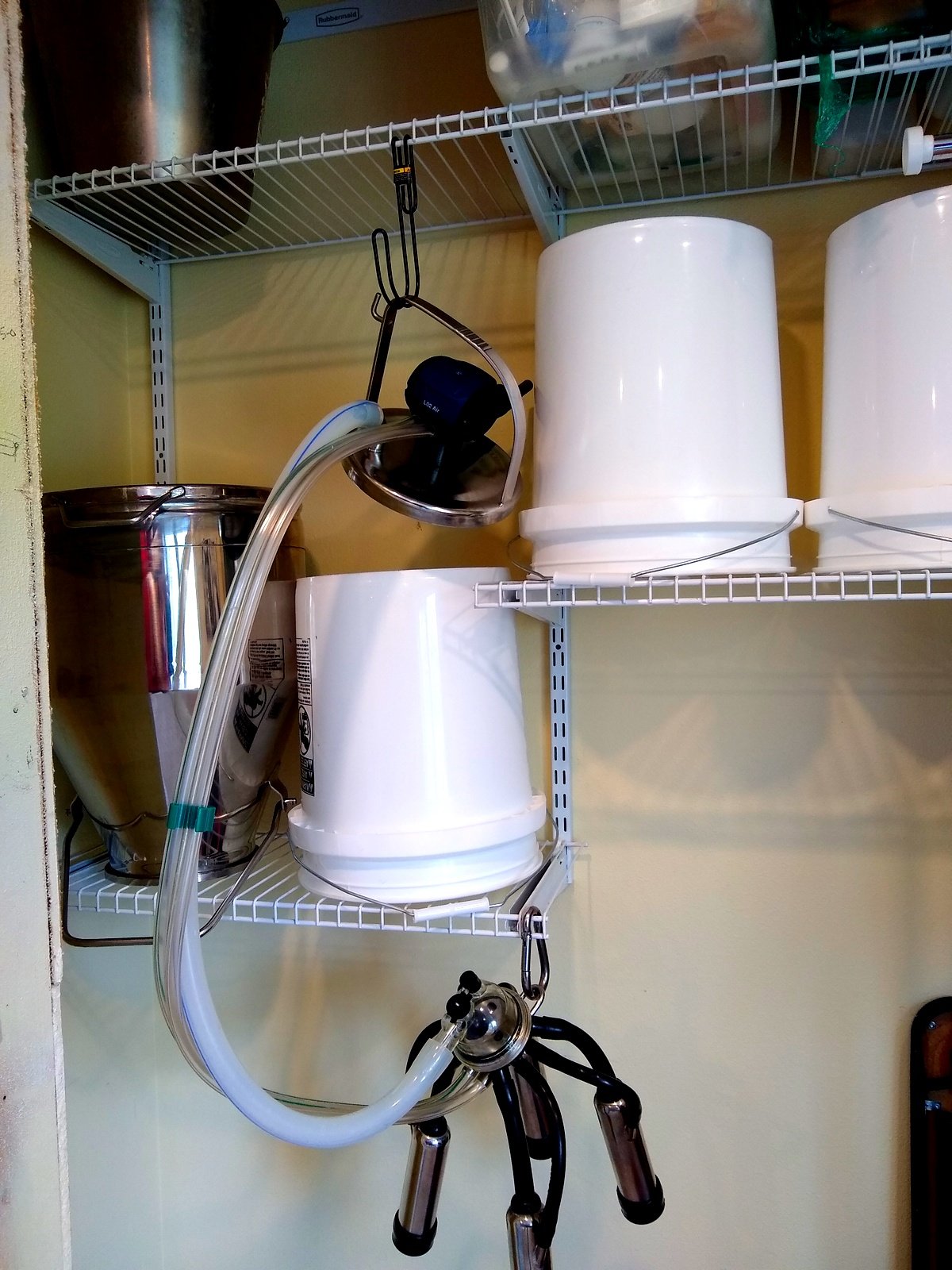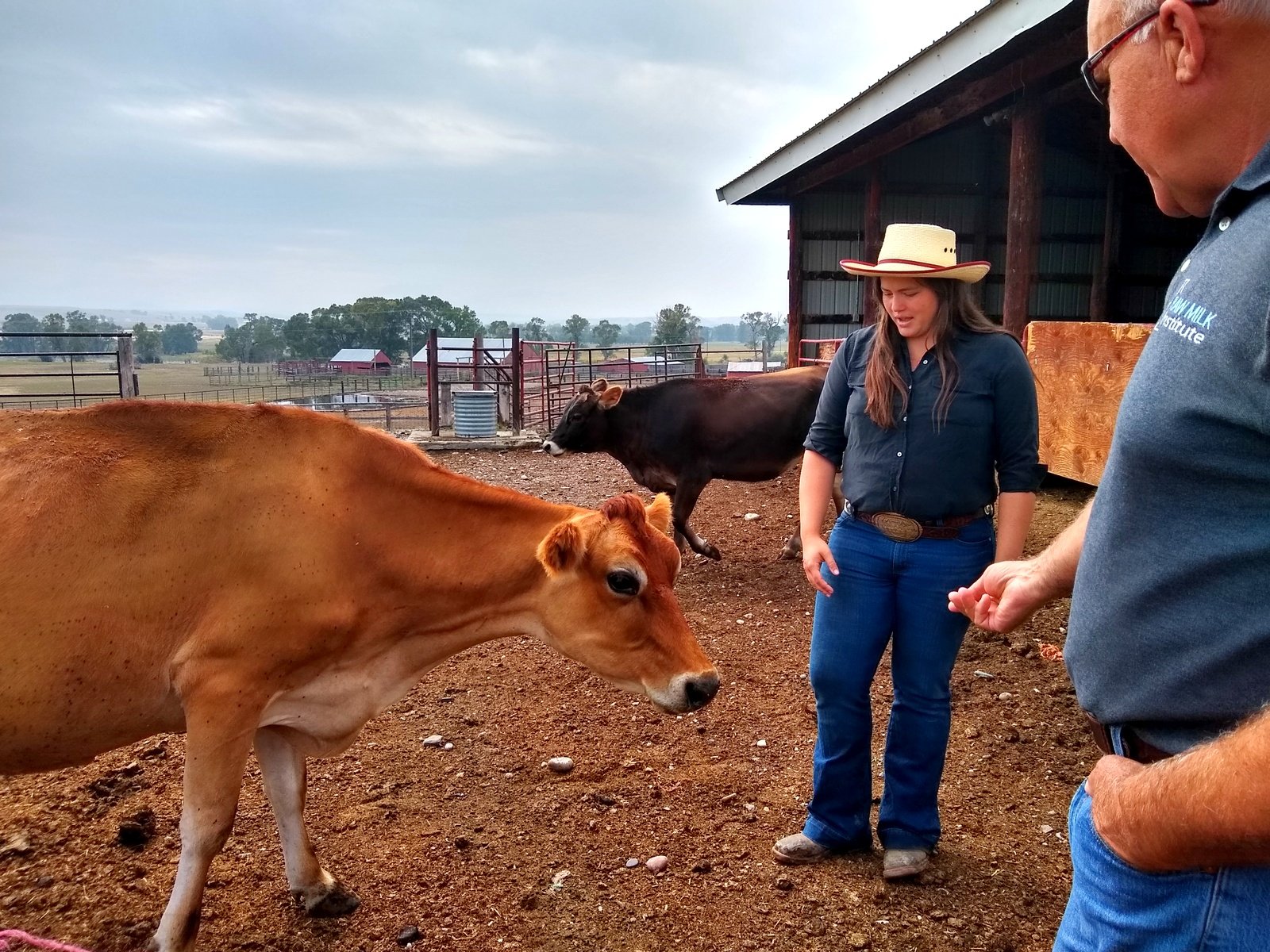The Raw Milk Institute and AERO have partnered for low-risk raw milk in Montana through farmer training and advocacy.
Raw Milk Becomes Legal in Montana
After close to 50 years of raw milk prohibition, Montana passed the Local Food Choice Act (SB199) in 2021 as mostly a Food Freedom and Sovereignty act. Under SB199, small dairies in the state could legally produce and sell raw milk with practically no involvement from regulators. This was good news for farmers and consumers alike, who had repeatedly tried to change Montana’s raw milk laws to allow for legal access to this important nourishing food.
A growing body of evidence shows that drinking raw milk is associated with decreased rates of asthma, allergies, eczema, ear infections, fever, and respiratory infections. Whereas, pasteurized milk is a top food allergen and difficult to digest, raw milk is actually a health-supporting food with rich therapeutic potential that is easily digested by most consumers, even many of those who are considered to be lactose intolerant.
Raw Milk Institute Receives an Urgent Call from Montana
Unsanitary milking equipment at raw milk dairy in Montana
SB199 opened up new possibilities for raw milk farmers and consumers. However, SB199 essentially tied the hands of the state’s Department of Public Health and Human Services (DPHHS), who were not allowed to impose any standards for the production of raw milk. Soon after the passage of SB199, the Raw Milk Institute (RAWMI) received an urgent call from a dairy farmer in Montana whose raw milk was suspected to be the cause of an outbreak of campylobacter illness.
In response, Mark McAfee, Chairman of RAWMI, traveled to Montana in Fall 2021 to assist the dairy and investigate the potential causes for the outbreak. Mark quickly discovered that the farmer had substantial biofilm build up on milk machine systems and inadequate training in what it takes to produce low-risk raw milk. While in Montana, Mark also met with AERO representatives to discuss SB199 and raw milk. AERO was working to ensure that Montana farmers had the resources they needed to successfully operate under the Local Food Choice Act.
No Standards or Training = Potential Peril for Legality of Raw Milk in Montana
If poorly produced, foodborne illnesses are a real risk for raw milk, yet these risks can be mitigated through careful production practices. Ideally, the careful production practices are combined with periodic bacterial testing with the goal of achieving low coliform and Standard Plate Count bacteria test results (as published in the RAWMI Common Standards).
Since Montana legalized raw milk but provided no standards or training for how to produce low-risk raw milk, the Fall 2021 campylobacter outbreak was unfortunately a predictable scenario. History has shown that repeated raw milk-related illness outbreaks will cause government agencies to ban raw milk outright or create difficult restrictions. In order to ensure both consumer safety and continued raw milk legalization, it was imperative that farmers in Montana gain access to training and resources for producing low-risk raw milk.
With Freedom Comes Responsibility
With the freedom to produce raw milk comes the responsibility to make sure that raw milk is safe to drink. Mark founded RAWMI in 2011, on a quest for safe raw milk that started after the raw milk from his own farm (Organic Pastures) was implicated in foodborne illnesses. As a former paramedic, Mark was committed to providing health-supporting foods for his customers, and those illness outbreaks were a huge wake-up call to learn more and do better.
The Raw Milk Institute was founded in order to learn more and teach others the best ways to produce raw milk that would be both safe and nutritious. From 2011-2012, RAWMI worked to establish the Common Standards for safe raw milk by consulting with a diverse international group of medical doctors, epidemiologists, nutritional consultants, veterinarians, food safety scientists, raw milk farmers, and raw milk consumers.
Since that time, RAWMI’s Common Standards have influenced raw milk regulations in many states across the USA. The effectiveness of these standards has been demonstrated in two peer-reviewed research papers by researchers from Canada and Europe which have found that carefully produced raw milk is a low-risk food which is fundamentally different from pre-pasteurized milk. The implementation of the RAWMI Common Standards has led to a significant reduction in raw milk-related illnesses and outbreaks. RAWMI has trained hundreds of farmers in these methods, and the Common Standards have been voluntarily adopted by farmers in many states and countries around the world.
Paving the Way for Low-Risk Raw Milk in Montana
In the wake of the campylobacter outbreak, AERO enthusiastically welcomed RAWMI to travel to Montana in order to train farmers in the production of low-risk raw milk. AERO even offered to cover the travel expenses for this work, through a grant from Western Extension Risk Management Education.
The valuable partnership between RAWMI and AERO came to fruition in mid-September. Mark McAfee and Sarah Smith (RAWMI Director and Board Secretary) traveled to Montana to teach two farmer training classes and meet with state regulators. Sam Blomquist from AERO did all of the on-site coordination by arranging the class locations and farm visits, taking registrations, and setting up meetings with regulators.
Raw Milk Risk Management Training in Montana
On September 14th and 16th 2022, Mark and Sarah from RAWMI taught Raw Milk Risk Management training courses in Big Timber and Avon Montana to dozens of attendees. These training workshops focused on the benefits of raw milk, grass-to-glass identification of risks, development of a risk management plan, and lessons learned from other raw milk dairies. (For those who weren’t able to attend one of our Risk Management Classes in-person, there is an online version here.)
After a morning classroom portion, each training day ended with a visit to a nearby farm that produces raw milk. RAWMI extends a big thanks to Allison Cooley, from Hoof and Leaf Creamery in Big Timber, and Bobbi McIntosh, from McIntosh Ranch in Avon, for hosting the on-farm visits for the class attendees. Bobbi is the first Montana raw milk producer to have completed RAWMI’s (free) LISTING program. The on-farm visits gave the class attendees to opportunity to see risk management principles in action, including the use of on-farm labs for inexpensive bacterial testing of raw milk.
Feedback from the attendees of the training workshops included the following:
“It was excellent on EVERY topic. Thank you SO much.”
“I really learned a lot about the benefits of raw milk as well as a lot of great info on safe practices.”
“[We got] to talk about the whole process from 'grass to glass' and how important it all is.”
Bridging the Gap Between Regulators and Farmers
Given that SB199 does not allow the state health department to impose any standards for raw milk production, regulators are stuck between a rock and a hard place in wanting to ensure that raw milk will be safe for consumers in Montana.
RAWMI and AERO met with state regulators at DPHHS to discuss ways to help Montana farmers have access to the information they need in order to produce low-risk raw milk. Additionally, several local and state regulators attended the training classes in Montana in order to learn more with the mutual goal that raw milk will be safe and freely available for both farmers and consumers.
Helping to Keep Raw Milk Legal and Safe in Montana
RAWMI has been pleased to partner with AERO for the good of raw milk farmers and consumers in Montana. Several farmers who attended the RAWMI training class have expressed interest RAWMI’s LISTING program and grants for farmers to build their own on-farm labs. RAWMI extends a big thanks to AERO for sponsoring and coordinating this important step for safe, low-risk raw milk in Montana.










